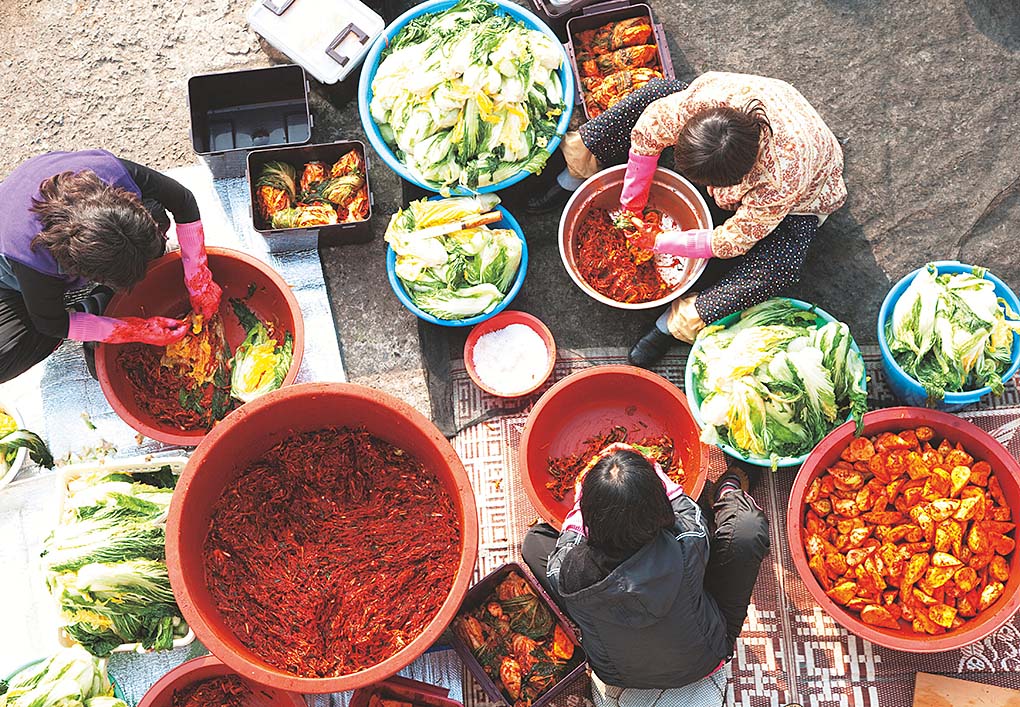
@imagetoday
Around the time when only a handful of red autumn leaves would remain on the branches, my childhood home began buzzing with winter preparations. Cabbages solid to the core were brought in from the vegetable garden and stacked in the yard. Then they were cut in half, their yellow insides proudly showing, and placed in a big basin to be sprinkled with salt. The festivities of kimjang, the winter kimchi making, began with the pungent scent of spicy seasonings wafting around the house.
Kimchi is a symbolic food on the Korean dining table and an icon of Korean culture. It is a fermented food devised by our ancestors as a way to eat vegetables throughout the winter. Rich in lactic acid bacteria, kimchi develops a range of distinct flavors as it ripens.
When napa cabbages (baechu) are salted, they retain their freshness while the enzymes in the briny water stimulate a chemical response with the fiber to start fermentation. The seasoning, a combination of vegetable and animal ingredients, including thin radish strips, garlic, scallions, red pepper powder, salted seafood, fresh squid and pine nuts, transforms kimchi into a perfect preserved food. Kimchi thus prepared is stored in earthenware crocks that are buried in the ground and taken out to eat during the winter months. These days, however, kimchi is stored more conveniently in high-tech kimchi refrigerators.
There are over 200 kinds of kimchi, differing according to region and family recipe. Red peppers were added to kimchi recipes in the mid-18th century and the napa cabbage used today as the main ingredient is an improved variety that was introduced to Korea in the late 19th century. Kimchi became a renowned international food after the 1988 Seoul Olympics. The export of kimchi began in 2000, and in December 2013, the time-old kimjang culture of making and sharing kimchi in late autumn to early winter was inscribed on the UNESCO List of Intangible Cultural Heritage of Humanity.
Nowadays, however, rather than making kimchi themselves, many people buy kimchi packed in plastic bags at the supermarket or order it online. But whenever the kimjang season comes around, I still miss the old days when I would bend my head so far back that it faced the sky, waiting for my aunt to drop a dollop of freshly-made kimchi right into my mouth.